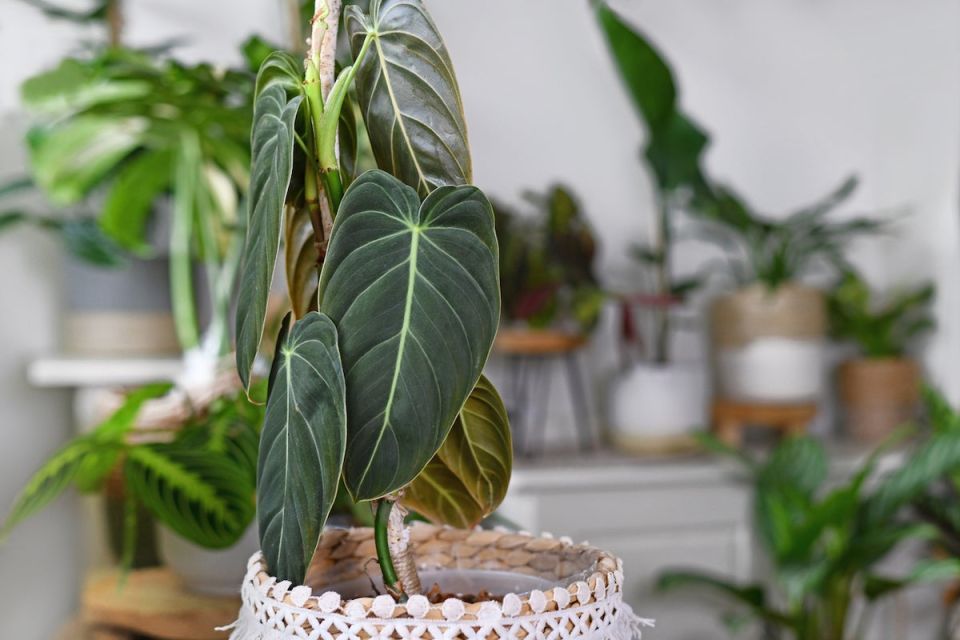Exploring Different Varieties Of Philodendron House Plants: A Guide For Plant Enthusiasts

Types of Philodendron House Plants
Introduction
Philodendron house plants are a popular choice among plant enthusiasts due to their attractive foliage and easy care requirements. These tropical plants belong to the Araceae family and are native to the rainforests of Central and South America. With their lush green leaves and ability to adapt to various indoor conditions, philodendrons make an excellent addition to any indoor space. In this article, we will explore different types of philodendron house plants, their characteristics, and tips for their care.
What are Philodendron House Plants?
Philodendron house plants are a diverse group of plants that fall under the genus Philodendron. They are known for their large, glossy leaves and vining growth habit. These plants can be climbers, trailers, or self-heading, making them suitable for different spaces and preferences. Philodendrons are often grown as indoor plants due to their ability to thrive in low light conditions and their air-purifying qualities.
Types of Philodendron House Plants
There are numerous types of philodendron house plants, each with its own unique characteristics and growth habits. Let’s explore some popular varieties:
1. Heartleaf Philodendron (Philodendron hederaceum)
The Heartleaf Philodendron is one of the most common and beloved philodendron varieties. It features heart-shaped, glossy leaves that trail or climb, depending on the support provided. This variety is known for its resilience and ability to tolerate neglect, making it ideal for beginners.
2. Split-Leaf Philodendron (Philodendron bipinnatifidum)
The Split-Leaf Philodendron, also known as Split-Leaf Monstera or Swiss Cheese Plant, is a striking variety with large, deeply lobed leaves. Its unique foliage adds a tropical touch to any interior space, and it can grow to impressive sizes if given the right conditions.
3. Xanadu Philodendron (Philodendron xanadu)
The Xanadu Philodendron is a compact variety with beautifully lobed, glossy leaves. It forms a dense clump and is well-suited for smaller spaces. This variety is known for its tolerance to a wide range of light conditions, making it adaptable to different parts of your home.
4. Elephant Ear Philodendron (Philodendron domesticum)
The Elephant Ear Philodendron features large, arrowhead-shaped leaves that resemble the ears of an elephant. Its foliage has a velvety texture and can grow up to 2 feet in length. This variety requires more space due to its size, making it an excellent choice for larger rooms or as a focal point.
5. Silver Sword Philodendron (Philodendron hastatum)
The Silver Sword Philodendron is a stunning variety with elongated, silver-green leaves that have a slightly metallic sheen. It adds a touch of elegance and sophistication to any space. This climbing philodendron can be trained to grow on a trellis or allowed to trail downwards for a cascading effect.
Caring for Philodendron House Plants
Philodendrons are generally low-maintenance plants, but they still require some care to thrive. Here are some essential tips for caring for your philodendron house plants:
Light:
Most philodendrons prefer bright, indirect light. Avoid placing them in direct sunlight as it can scorch their leaves. However, some varieties can tolerate lower light conditions, making them suitable for dimly lit spaces.
Watering:
Allow the top inch of the soil to dry out before watering your philodendron. Overwatering can lead to root rot, so it’s essential to strike a balance. Adjust watering frequency based on the plant’s needs and the environment it’s placed in.
Humidity:
Philodendrons thrive in moderately humid environments. If the air in your home is dry, consider using a humidifier or placing the plant on a tray filled with water and pebbles to increase humidity around it.
Temperature:
Philodendrons prefer temperatures between 65-85°F (18-29°C). Avoid exposing them to cold drafts or extreme temperature fluctuations.
Soil and Fertilizer:
Plant your philodendron in well-draining, peat-based soil. You can use a balanced, water-soluble fertilizer during the growing season to promote healthy growth. Follow the instructions on the fertilizer packaging for proper dosage.
Support:
Depending on the growth habit of your philodendron, provide appropriate support such as moss poles, trellises, or stakes to help them climb or trail.
Conclusion
Philodendron house plants offer a wide range of options to choose from, each with its own unique beauty. Whether you prefer trailing vines or large, dramatic leaves, there is a philodendron variety to suit your style and space. With proper care and attention to their specific needs, these plants will thrive and bring a touch of the tropics into your indoor environment. So go ahead, explore the world of philodendrons, and enjoy the beauty they bring to your home!
Frequently Asked Questions (FAQs)
1. How often should I water my philodendron?
The frequency of watering depends on various factors such as the size of the pot, humidity levels, and temperature. Allow the top inch of soil to dry out before watering, and adjust accordingly to maintain the right moisture balance.
2. Can I grow philodendrons in low light conditions?
Yes, many philodendron varieties can tolerate low light conditions. However, their growth may be slower, and they might not produce as many leaves compared to those grown in brighter light.
3. Are philodendrons toxic to pets?
Yes, philodendrons are toxic to cats and dogs if ingested. Keep them out of reach of pets and consult a veterinarian immediately if you suspect your pet has consumed any part of the plant.
4. How do I propagate my philodendron?
Philodendrons can be propagated through stem cuttings. Take a cutting just below a node, remove the lower leaves, and place it in water or moist soil until roots develop. Once rooted, you can transfer it to a pot with well-draining soil.
5. Do philodendrons need regular pruning?
Pruning is not necessary for philodendrons, but it can help shape the plant and promote bushier growth. If your philodendron becomes too leggy or unruly, you can trim back the vines or remove any yellowing or damaged leaves.

I am a beginner writer who continues to learn and consistently creates informative articles to express the ideas that I master.